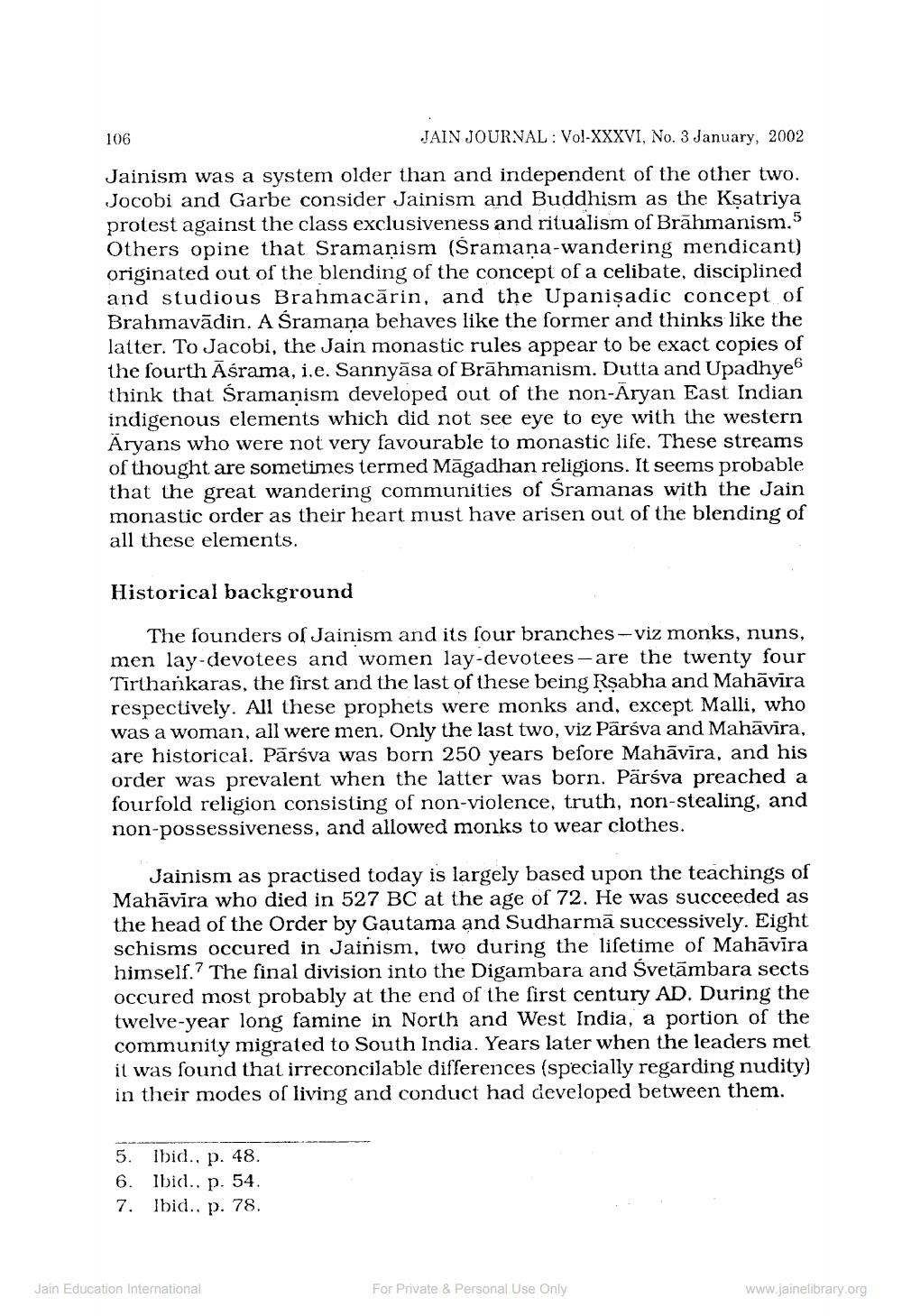________________
106
JAIN JOURNAL: Vol-XXXVI, No. 3 January, 2002
Jainism was a system older than and independent of the other two. Jocobi and Garbe consider Jainism and Buddhism as the Ksatriya protest against the class exclusiveness and ritualism of Brāhmanism.5 Others opine that Sramanism (Sramana-wandering mendicant) originated out of the blending of the concept of a celibate, disciplined and studious Brahmacärin, and the Upanişadic concept of Brahmavādin. A śramana behaves like the former and thinks like the latter. To Jacobi, the Jain monastic rules appear to be exact copies of the fourth Aśrama, i.e. Sannyāsa of Brāhmanism. Dutta and Upadhye6 think that śramanism developed out of the non-Aryan East Indian indigenous elements which did not see eye to eye with the western Aryans who were not very favourable to monastic life. These streams of thought are sometimes termed Magadhan religions. It seems probable
t the great wandering communities of Sramanas with the Jain monastic order as their heart must have arisen out of the blending of all these elements.
Historical background
The founders of Jainism and its four branches-viz monks, nuns, men lay-devotees and women lay-devotees - are the twenty four Tirthankaras, the first and the last of these being Rsabha and Mahāvīra respectively. All these prophets were monks and, except Malli, who was a woman, all were men. Only the last two, viz Pārśva and Mahāvīra, are historical. Pārsva was born 250 years before Mahāvīra, and his order was prevalent when the latter was born. Päráva preached a fourfold religion consisting of non-violence, truth, non-stealing, and non-possessiveness, and allowed monks to wear clothes.
Jainism as practised today is largely based upon the teachings of Mahävira who died in 527 BC at the age of 72. He was succeeded as the head of the Order by Gautama and Sudharmā successively. Eight schisms occured in Jainism, two during the lifetime of Mahāvīra himself. The final division into the Digambara and Svetāmbara sects occured most probably at the end of the first century AD. During the twelve-year long famine in North and West India, a portion of the community migrated to South India. Years later when the leaders met it was found that irreconcilable differences (specially regarding nudity) in their modes of living and conduct had developed between them.
5. Ibid., p. 48. 6. ibid. p. 54. 7. Ibid., p. 78.
Jain Education International
For Private & Personal Use Only
www.jainelibrary.org




